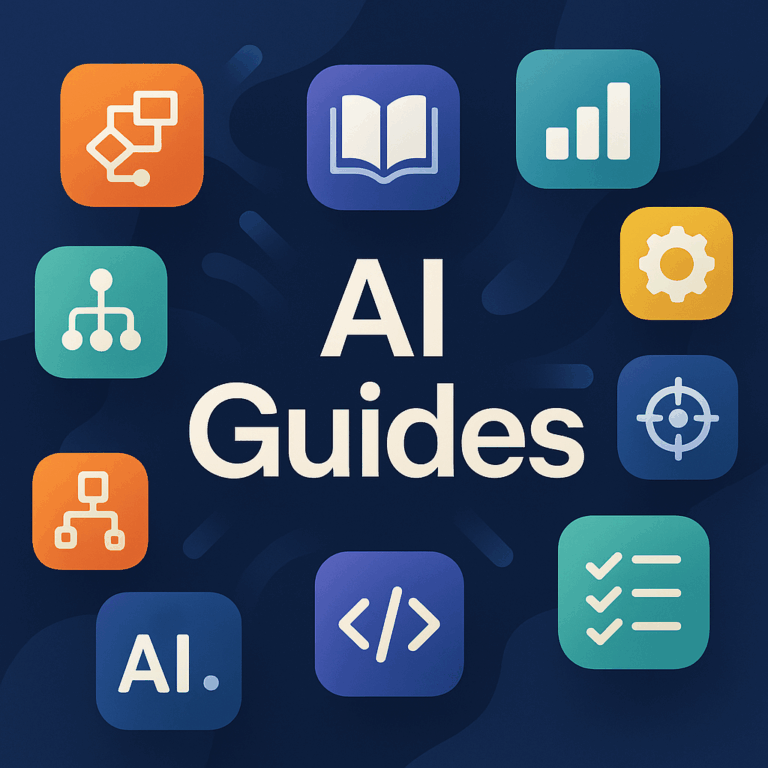Aloittelijan opas generatiiviseen tekoälyyn: perusteiden ymmärtäminen
Generatiivisesta tekoälystä on nopeasti tullut yksi 2000-luvun transformatiivisimmista teknologioista. Realististen kuvien ja videoiden luomisesta monimutkaisen koodin kirjoittamiseen tämä tekoälyn osajoukko voi muokata toimialoja ja jokapäiväistä elämää. Mutta mikä on generatiivinen tekoäly ja miten se toimii? Tässä aloittelijan oppaassa erittelemme perusasiat ja autamme sinua ymmärtämään, miksi se on niin uraauurtava innovaatio.
Mikä on generatiivinen AI?
Generatiivisella tekoälyllä tarkoitetaan järjestelmiä, jotka käyttävät koneoppimismalleja uuden sisällön luomiseen olemassa olevan datan perusteella. Toisin kuin perinteinen tekoäly, joka keskittyy analysointiin ja ennustamiseen syötteiden perusteella, generatiivinen AI luo ulostuloja, kuten tekstiä, kuvia, ääntä tai jopa videota. Esimerkiksi OpenAI:n ChatGPT ja DALL·E voivat kirjoittaa esseitä tai luoda ainutlaatuisia kuvia yksinkertaisista tekstikehotteista.
Kuinka generatiivinen AI toimii?
Generatiivisen tekoälyn ytimessä ovat kehittyneet koneoppimismallit, joita kutsutaan nimellä Generative Adversarial Networks (GAN) ja Muuntajat. Nämä mallit oppivat laajoista tietojoukoista tunnistamaan malleja ja rakenteita, jolloin ne voivat luoda täysin uusia tuloksia. Tässä on yksinkertaistettu erittely:
- Koulutusvaihe: AI-malli oppii tietojoukosta, kuten kuvista, tekstistä tai äänitiedostoista.
- Sukupolvivaihe: Koulutettu malli käyttää oppimaansa tietoa luodakseen uutta sisältöä, joka on linjassa tietojoukosta löytyneiden mallien kanssa.
- Tarkennus: Malli kehittyy jatkuvasti takaisinkytkentäsilmukoiden avulla generoitujen tulosten laadun ja tarkkuuden parantamiseksi.
Generatiivisen tekoälyn reaalimaailman sovellukset
Generatiivinen tekoäly tekee jo aaltoja eri sektoreilla:
- Luovat teollisuudenalat: Generatiivista tekoälyä käytetään musiikin luomiseen, grafiikan suunnitteluun ja jopa romaanien kirjoittamiseen.
- Terveydenhuolto: Se auttaa luomaan synteettistä lääketieteellistä dataa tutkimusta varten ja simuloimaan lääkekehitysprosesseja.
- Asiakaspalvelu: Generatiivisella tekoälyllä toimivat chatbotit parantavat asiakaskokemusta tarjoamalla nopeita ja tarkkoja vastauksia.
- koulutus: Se auttaa luomaan räätälöityä oppimissisältöä, tietokilpailuja ja opetusmateriaaleja.
Eettiset näkökohdat
Vaikka generatiivinen tekoäly on jännittävää, se sisältää myös haasteita. Ongelmiin, kuten harhaanjohtamiseen koulutustiedoissa, vääriin tietoihin ja tekijänoikeusrikkomuksiin, on kiinnitettävä erityistä huomiota. On ratkaisevan tärkeää käyttää generatiivista tekoälyä vastuullisesti ja eettisesti, mikä varmistaa oikeudenmukaisuuden, läpinäkyvyyden ja vastuullisuuden.
Generatiivisen tekoälyn käytön aloittaminen
Tässä on joitain aloittelijaystävällisiä työkaluja ja resursseja generatiivisen tekoälyn tutkimiseen:
- ChatGPT: Kokeile tekstin luomista sähköposteja, yhteenvetoja tai luovaa kirjoittamista varten.
- DALL·E: Yritä luoda ainutlaatuisia visuaalisia kuvia tekstikuvauksista.
- Kiitotie ML: Tutustu videoiden ja kuvien luomiseen tekoälyllä.
Generatiivinen tekoäly on enemmän kuin pelkkä muotisana – se on tehokas työkalu, joka on tullut pysyäkseen. Kun jatkamme sen potentiaalin tutkimista, perusasioiden ymmärtäminen on ensimmäinen askel sen mahdollisuuksien vapauttamisessa. Olitpa utelias aloittelija tai aloitteleva tekoälyammattilainen, nyt on täydellinen aika sukeltaa ja oppia lisää.
Pysy kuulolla saadaksesi lisää koulutusresursseja ja oivalluksia generatiivisesta tekoälystä osana GenAISA-projektia!


